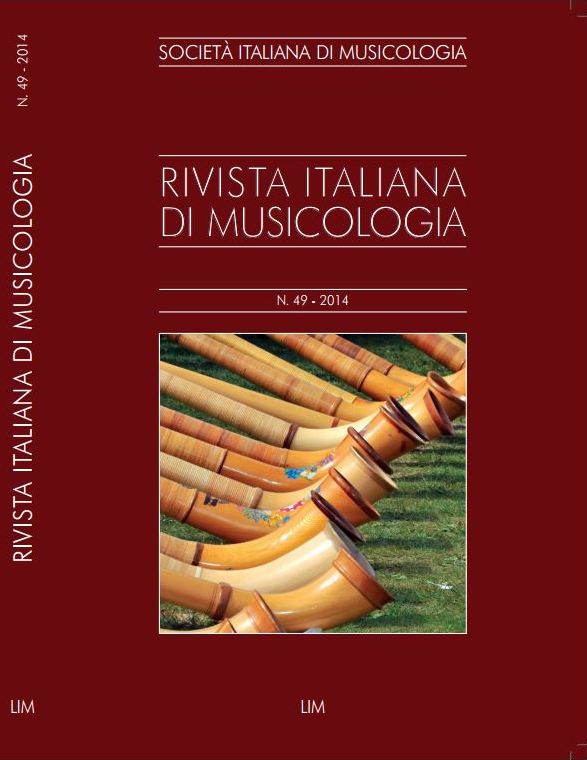Il cercar della nota: un abbellimento vocale ‘cacciniano’ oltre le soglie del Barocco
Abstract
The cercar della nota consists in the intonation of a melodic phrase by means of portamenti or passing notes. Most musicologists consider it a vocal practice limited to the 17thcentury, and in particular to composers of the seconda prattica (G. B. Bovicelli 1594 and G. Caccini 1602) but also to German composers that introduced elements of the Italian style in their country (among them, M. Praetorius 1619, C. Bernhard 1650 ca. and W. Mylius 1685). On the contrary, there are written document that confirm that this grace – born in Italy and then spread out in Europe – was practiced well until the first decades of the 20th century, although with some different names and characteristics. Intervals, position within the musical phrase, use of ‘carrying’ of the tone, can change from period to period. In the majority of cases, the mentioned written sources are singing primers. Among these, the most relevant ones are German, but we also find some Spanish (Remacha 1799), French (García 1847) and English (Corri 1779) ones. In the 17th century, the cercar della nota was not only permitted but even required. Since the mid18th century, some authors started to consider it a misused device: it was therefore banned by theorists because of its abuse. Although considered nauseating, it had nonetheless never been abandoned from practice in the 20th century. The cercar della nota was sometimes justified more by technical more than aesthetical reasons. Rather than articulating syllables on high notes, a singer can pronounce them on a lower passing note. This leads to the real one through a portamento. Relying on the evidence of numerous written sources, the author argues that historically informed performances of vocal music of the past should not exclude the phenomenon of the cercar della nota, a technique that is totally neglected nowadays.Published
05/28/2014
Issue
Section
Saggi


